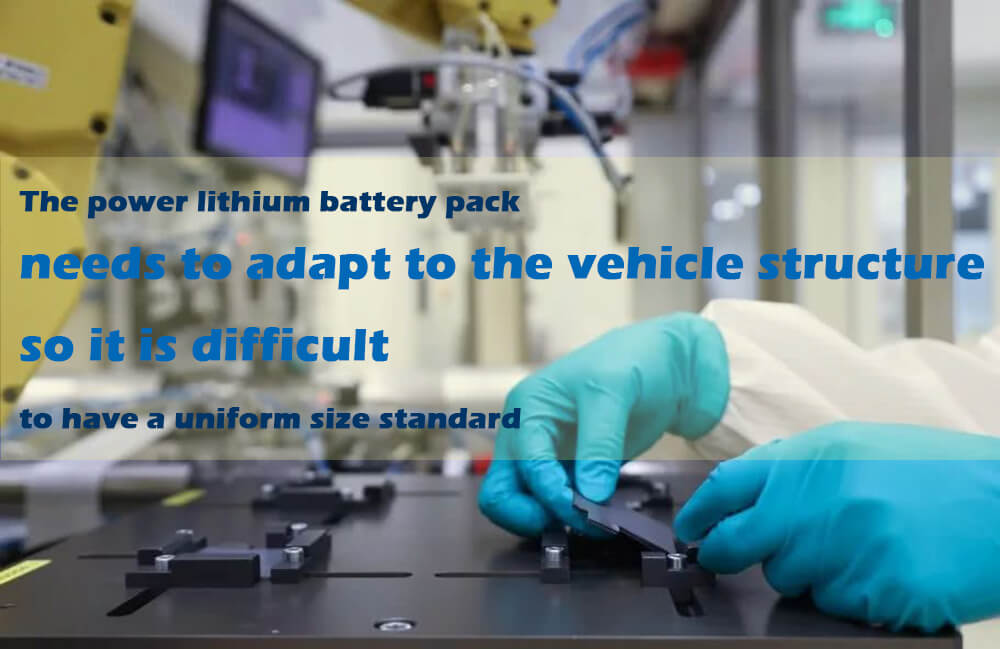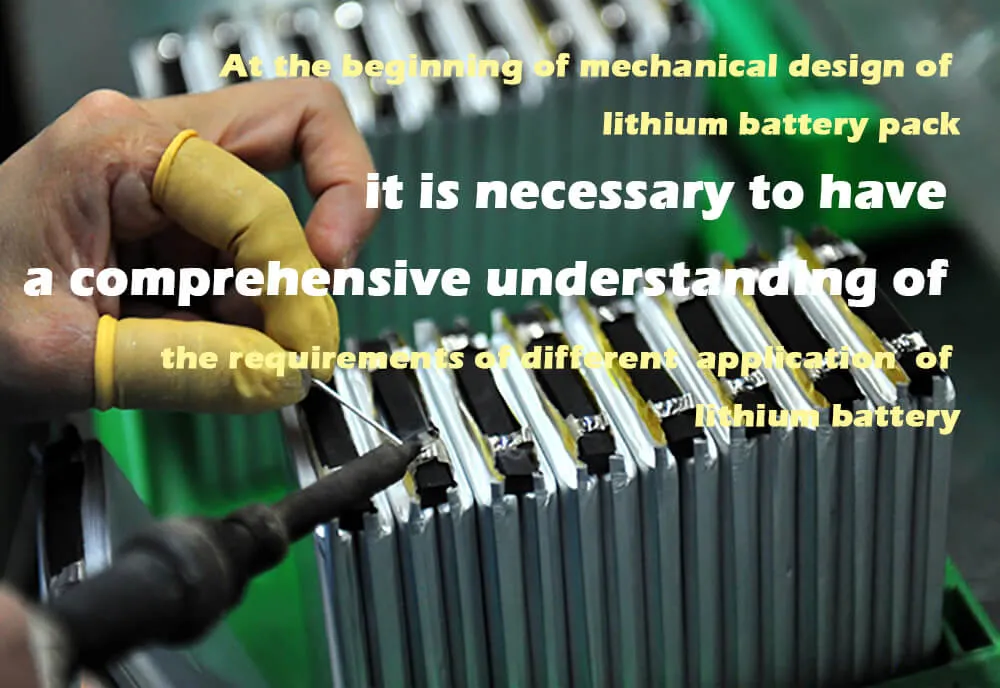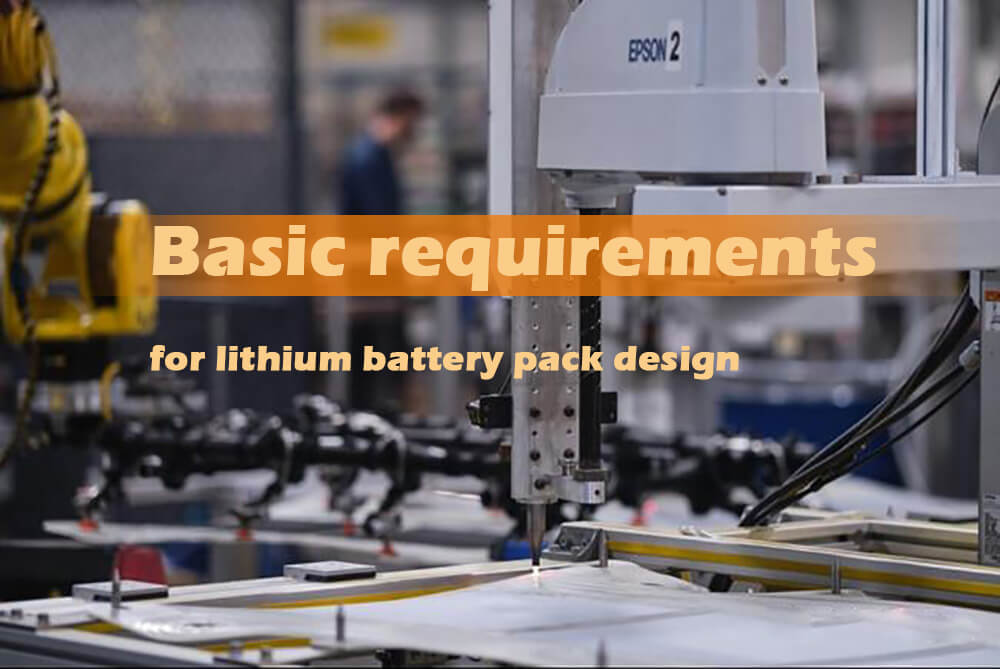Home » lithium ion battery knowledge » How to design lithium battery pack?
How to design lithium battery pack?
This article mainly discusses how to design lithium battery pack easily, introduces the standardization of lithium battery pack, and in the process of design, what factors need to be considered and what requirements must to be satisfied.
Standardization of lithium battery pack
Different vendors
First, we need to note that there is no standard size for lithium battery pack, nor is there likely to be any in the near future, for a simple reason: different manufacturers build and integrate electric vehicles differently.
The power lithium battery pack needs to adapt to the vehicle structure, so it is difficult to have a uniform size standard. In large stationary energy storage systems, usually use 19 (feet) (1 ft = 0.3048 m) of shelves to install the lithium ion battery, but different lithium-ion battery manufacturers have developed their own energy storage system installation.
Adapt to the new size and installation means to change the existing manufacturing technology, it is bound to trigger a new investment and cost. As a result, standardization of lithium battery pack or batteries is unlikely, at least in the near term.
Different models
In addition, electric vehicles on the market are based on the basic structure of gasoline and diesel cars to design lithium battery pack, manufacturers only use the existing space in the body structure to assemble the battery system, there is no targeted for the purpose of optimization of the car body structure design.
That means battery systems could be installed in the trunk, seat, drive shaft passage and fuel tank; The disunity of position has become a great obstacle to the standardization of lithium battery pack.
In today’s era of electric vehicle manufacturing, we need to change strategies for specific purposes. It will take 10 to 15 years for an electric car to be redesigned. That means batteries could be two to three generations away.
The size and installation position of the battery system can be tailored for future electric vehicles. There are only a few manufacturers (like Tesla) on the market that can offer new designs for electric cars, and the good news is that some major automakers are also working on this.
Different application requirements
At the beginning of mechanical design of lithium battery pack, it is necessary to have a comprehensive understanding of the requirements of different application of lithium battery, such as the application system and installation position of the battery.
If it is applied to electric vehicles, whether it is installed in the car cover, passenger compartment, chassis or trunk; If it is applied to energy storage, is it installed in a mobile box or a fixed position; If it is used in navigation, what kind of sealing system is needed and what kind of requirements are there for the battery application environment?
Once the location and size of the battery is determined, other requirements can be considered, such as whether it needs to work in a harsh environment, what level of sealing it needs to be, whether it is a system component, and how much impact or vibration it needs to withstand.
Mechanical requirements for battery systems
Next, we need to estimate other mechanical requirements for the lithium battery pack. Whether the battery system is installed in the vulnerable zone of the car, whether it needs to meet the load requirements, in other words, whether it can withstand passengers standing or walking.
In addition, some electromagnetic interference and electromagnetic compatibility should also be considered. Also consider the distance from the body heat source, the distance from the passenger position, and the convenience of subsequent maintenance.
Considerations for lithium battery pack design
Regarding the mechanical and structural parts of battery systems, we will initially talk about various kinds of lithium battery packs currently available. Lithium Iion battery pack commonly set up the cells into an electromechanical unit.
It consists of the bus, cell, temperature and voltage control circuit board, thermal management system as well as mechanical framework. Couple of things need to be taken into consideration in the design of a lithium battery pack.
The final pack arrangement depends on the the type of cell
For instance, plastic or metal frames should be taken into pack configuration to provide protection and exert pressure on the pack to pouch cells. As for bigger square cells, given that each cell is a whole framework, the Interconnect Board (ICB) provides a appropriate fixed framework. There is no need to to offer extra mechanical protection.
Binding problem for lithium battery pack
Sometimes, we use bundling to assemble the complete the whole design of lithium battery pack . Nevertheless, two long-term concerns require to be assessed when we are bounding modules. If you are using plastic-based strapping, the problem comes down to the level of elasticity over the life of the material.
If the ribbon material is stretched long enough over time, the cell may no longer get the stack pressure they need. If we use a steel strip, the opposite effect may occur, as it does not stretch over time, yet gradually increase size of cell.
As a result, the force given by the strip increases over time.
Convenience of subsequent maintenance
Another important consideration in lithium-ion battery pack design is ease of follow-up maintenance. In lithium-ion battery pack designs, some producers use mechanical components, bolts or nuts to link the cell. This kind of design allows the user to replace the cell and use the pack throughout the life of battery.
However, such mechanical connections tend to loosen during use, resulting in increased contact impedance and possibly battery failure. Other manufacturers weld batteries together to enhance joint stability.
This kind of method is relatively cost-effective (fasteners are not required) and has high reliability (there is no loosening). Nevertheless, in this design, the battery cannot be changed separately, and that means the failure of a single cell lead to the fact that whole battery cannot be used again.
Modules are the basis of all battery systems, and a stable and dependable pack method is a solid assurance for subsequent multi-system applications for the majority of battery producers.
Basic requirements for lithium battery pack design
Mechanical strength requirements
The square power battery pack is a lithium battery pack which is connected by a busbar, connected in series and parallel, and integrated into a lithium battery pack by mechanical structure.
In the national standards GBT31467, GBT31485 and GBT31486, the power lithium battery pack is required to pass vibration, extrusion, impact, drop and other tests.
At the same time, because the single battery may bulge during the charging and discharging process, the mechanical structure of the module itself is needed to offset the swelling force of the battery. This requires a certain mechanical strength of the pack structure.
The realization of the overall mechanical strength of the lithium battery pack requires that the electrical connection structure of the lithium battery pack — the design of copper-aluminum row and the external protection measures for the arrangement of single cells inside the lithium battery pack — the external frame structure of the pack has certain mechanical strength.
Specifically, it is necessary to select the component material, the structural design of the component, and the welding process to ensure that the strength design of the lithium battery pack can be achieved.
Insulation strength Requirements
In the state of charge, the pole, outer shell and other parts of a single battery are also charged. In order to prevent external short circuit and ensure the Lithium-ion battery safety and the vehicle safety, the the lithium battery pack shall pass the corresponding insulation and voltage test before shipment.
Usually, an applied voltage is applied between the total cathode and anode outputs of the pack and the housing. The measured insulation impedance and leakage current must be less than the specified value before the pack can pass.
Voltage and temperature sampling function
In the process of vehicle operation, the voltage and temperature of the battery system need to be monitored to ensure the safety of driving, which requires setting a voltage and temperature acquisition device in the lithium battery pack.
In the realization of structural design of voltage and temperature acquisition board, it is necessary to consider the limited space inside the pack.
And at the same time ensure the accuracy of sampling, and have a certain structural strength to prevent the swelling force of single battery, mechanical vibration and other internal and external effects on the acquisition board structure damage.
Design of over current capacity
In the power lithium battery pack, single batteries are arranged in parallel with copper and aluminum to achieve the overall charging and discharging function of the battery pack.
The structure design of copper-aluminum bar must have the corresponding flow capacity to prevent the unreasonable temperature distribution in the lithium battery pack and the high local temperature, which may cause safety hazards.
To ensure module flow ability, copper LvPai structure design must be according to the requirements of the specific flow and copper aluminum mass per unit area of the flow capacity and set up enough area to ensure that the flow rate. At the same time copper LvPai connected to the battery pole column welding the weld shape dimension design must be reasonable, to ensure that the copper LvPai fully effective contact with battery pole column, prevent welding phenomenon, Eliminate security risks.
Dust proof and operation protection
The exposed electrical parts of the module should be fully protected to prevent dust from falling into the lithium battery pack. At the same time, direct contact between human hands and the electrical parts of the lithium battery pack caused by misoperation should be prevented to remove potential safety hazards.


























2 thoughts on “How to design lithium battery pack?”
I pay a quick visit day-to-day a few web sites and information sites
to read content, but this web site provides quality based posts.
Hi there! I know this is kind of off-topic however I needed to ask.
Does managing a well-established blog like yours require
a lot of work? I’m brand new to blogging but I do write in my journal on a
daily basis. I’d like to start a blog so I will be able to share my
experience and views online. Please let me know if you have any kind of recommendations or tips for brand new aspiring blog owners.
Appreciate it!